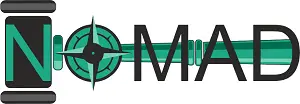Introducing Amrit Bharat Express Launch Date, Route & Fare
Before, it was called Vande Sadharan.
Synonym for Vande Bharat: This innovative train series aims to revolutionise travel for the average person. It is sometimes referred to as the sleeper counterpart of the high-speed Vande Bharat trains.
The colour palette of Amrit Bharat Express is saffron-grey.
Cost-Effective: This sleeper class service is intended to be inexpensive and does not have air conditioning.
Amrit Bharat locomotive: There is a locomotive on either end of the Amrit Bharat Express train.
Also read about US H1B visa rate
Chittaranjan Locomotive Works is the manufacturer of this 6,000 horsepower WAP5 locomotive.
Aerodynamic Design: The locomotives are aerodynamically engineered in the vein of the Vande Bharat. The trains will move faster as a result of this.
Launch Date of the Amrit Bharat Express
On December 30, Indian Prime Minister Narendra Modi is scheduled to officially open the brand-new “Amrit Bharat Express” train. The first gift of the New Year to the average person are the trains, which are regarded as the “sleeper edition” of the fast Vande Bharat trains.
The non-AC sleeper class Amrit Bharat Express is a superfast express service that is intended to be significantly less expensive than any other train over extended routes. On Saturday, December 30, the first such train is scheduled to depart from Ayodhya, in Uttar Pradesh.
Fares for Amrit Bharat Express
According to the Railway Board, the minimum cost for Amrit Bharat Express trains will be Rs 35 ($0.42) for trips between one and fifty miles. This fare includes no additional fees and is approximately 15–17% more than that of other mail or express trains, according to a statement from a railway official that PTI quoted.
For trips up to 50 km, the minimum fare on the Amrit Bharat Express trains is Rs. 35 for second class coach and Rs. 46 for sleeper coach. For travel up to 5000 km, the minimum fare for second class and sleeper class will be Rs 933 and Rs 1469, respectively.
Speed of Amrit Bharat Express
The Indian Railways’ research and testing division, or RDSO, has definitively determined the highest running speeds that are acceptable for several types of passenger coaches:
Coach ICF: 110 Kmph
130 Kmph for LHB non-AC coaches
Coaches LHB AC: 160 Kmph
It is important to remember that these top speeds are only allowed if the tracks on the corresponding route meet the necessary requirements and are judged appropriate for those speeds.
The Amrit Bharat Express has a maximum permitted speed (MPS) of 130 mph because it is classified as an LHB non-AC train. This is subject to the sections of the trip fulfilling the 130 MPS fitness requirements, though. Due to the existing condition of the majority of Indian railway tracks, which frequently do not meet the necessary requirements, these trains will primarily run at a lower maximum speed that is permitted, which will vary between 100 and 110 Kmph on different stretches of the route.
Routes of Amrit Bharat Express
Currently, Mumbai-Patna and Delhi-Mumbai are the two possible routes being considered for the Amrit Bharat Express, also called the Vande Sadharan Express. It is envisaged that more routes will be added in later stages. Future expansions are intended to include Patna-New Delhi, Howrah-New Delhi, Hyderabad-New Delhi, Ernakulam-Guwahati, Tambaram-Howrah, Delhi-Jodhpur-Bandra Terminus, and Jammu-Chennai, however the first operation is anticipated on the aforementioned routes.
Amrit Bharat Express: Characteristics
According to a Railway Board regulation, all Amrit Bharat Express trains would be equipped with push-pull Linke Hofmann Busch (LHB) coaches.
In addition, the trains will have bigger gangways that are sealed against dust, semi-permanent couplers connecting coaches, horizontal sliding windows, and aerosol-based fire suspension systems in the restrooms. In addition, the trains will have electrical sections, fluorescent guide strips on the floor, emergency disaster management lights, bench-style seating in some coaches, and sliding doors to separate the reserved and unreserved sections.
Additionally, these trains have “Kavach,” an indigenous technology that aids locomotive pilots in managing operations in inclement weather and preventing Signal Passing At Danger (SPAD) situations.
Contributed by Ankit raj Sharma




